CHEF FIT (Formerly 5-Minute Recipes)
Voice UX/UI Case Study
PROJECT TYPE
Amazon Alexa Skill
ROLE
Writer, Designer, Basic Coding, Research & Testing
TOOLS
draw.io, Alexa Developer Console, Google Sheets, Keynote
PROJECT OVERVIEW
OBJECTIVE
Allow users to select from among several options for quick meals, then follow step-by-step directions to prepare the selected meal.
CONTEXT
Making a meal can be difficult in today’s busy world. To help solve this problem, I designed an Alexa skill that allows users to browse several recipes, then select one and have Alexa assist with the meal preparation.
SKILL FEATURES
• 20+ different recipes with at least 3 steps each
● Breakfast, lunch, dinner, and snack recipe buckets
● The ability to have Alexa select a recipe for a user
● The ability to ask for a different recipe if the user doesn’t like a suggestion
● Confirmation for the chosen recipe
● A strategy for dealing with users who miss a preparation step or need something repeated
● A way to check whether the user is ready to move on to the next step
● A response for an unsupported utterance
● A custom help message
User persona
The persona I created below was done with a similar approach to what I would create for visual products and services, but contains necessary information about speech patterns, extra sample quotations, and notes the environment and noise profile where the user will be interacting with this skill.
USER STORIES & Sample Dialogs
After writing out a few stories focused on the user's main pain points, I wrote some sample dialogs to get a general sense of what the overall experience would feel like. I thought about the typical words, sentence structures, and level of formality of my persona. I also wanted to learn whether the experience made sense. Ultimately, these dialogs (much like a wireframe) gave me the opportunity to think about the optimal way for a user to complete each task.

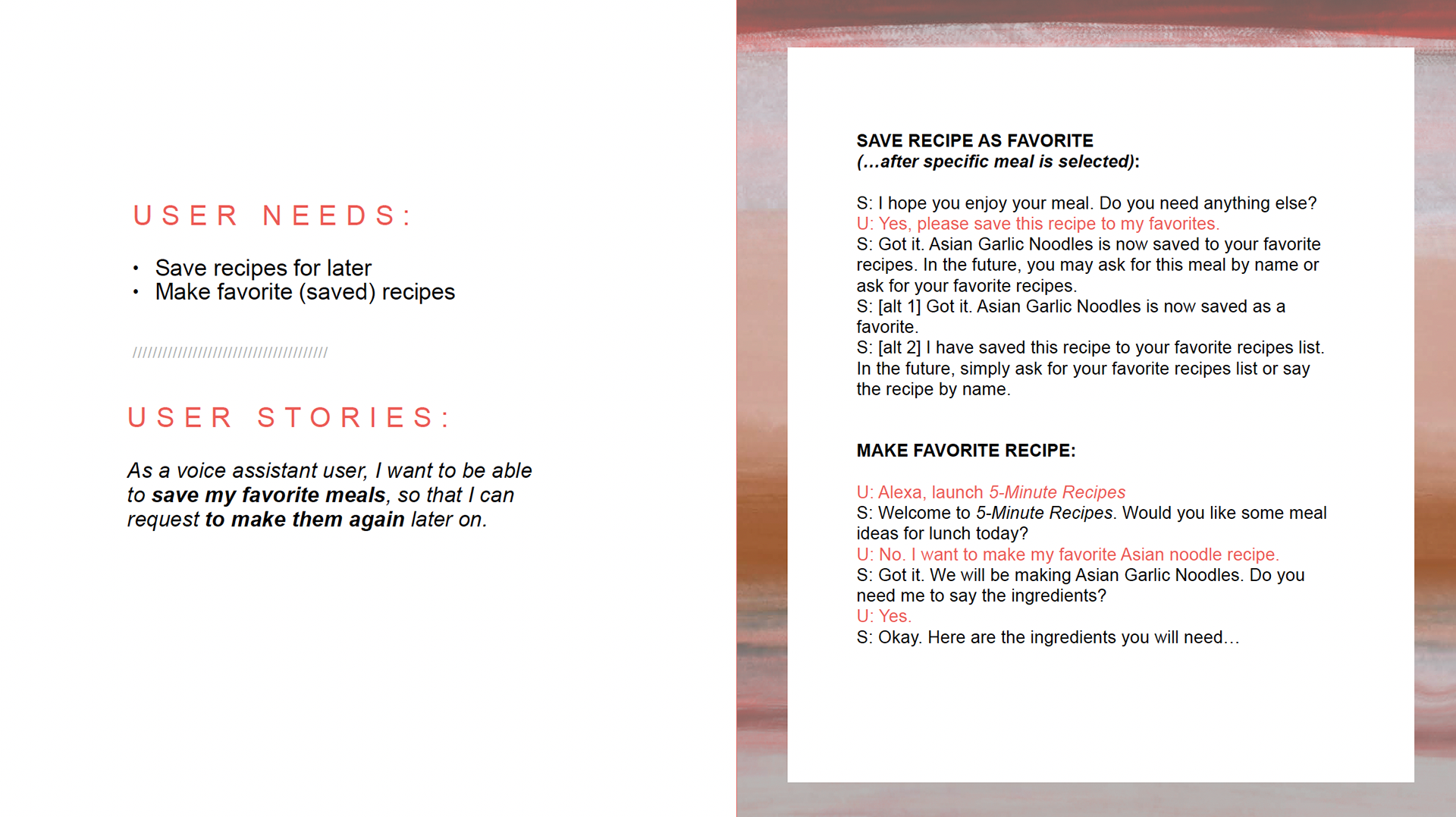
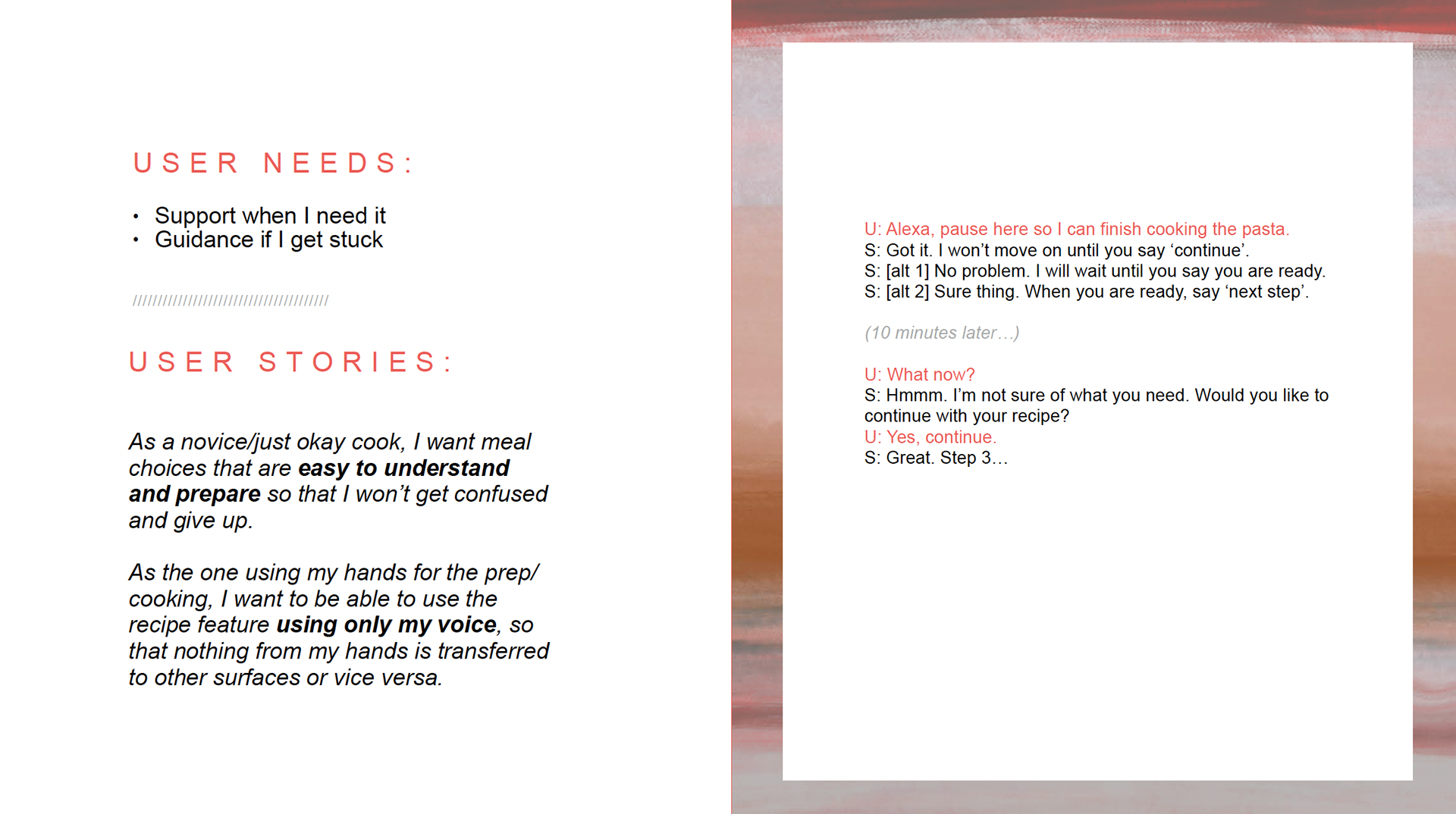
USER FLOWS
From my user stories and sample dialog learnings, I identified the core tasks a user would need to perform while using the skill. This allowed me to start building user flows for the core tasks.
Voice Script
The next step was to create a spreadsheet for the project's script which contained all prompts and responses needed for the experience. It also documented the sample utterances for each state, what the system does when the user encounters an error, what happens when the user asks for help, how other requests such as “repeat” behave, and the recipes to call upon. It was also at this time, that I renamed the skill from "5-Minute Recipes" to "Chef Fit" to avoid name confusion with an existing Amazon Alexa skill and to highlight using only healthy recipes.
Skill Code
In the Alexa Developer Console, I began building Chef Fit step by step, entering the invocation name, sample utterances, intents, and slots - teaching Alexa when and how to take users to different parts of the skill based on what they say.
With ASK (Alexa Skill Kit), I was able to use pre-existing JSON code that I could then customize. Thankfully, Amazon has already taken care of many of the steps with ASK and Lambda.
CONTEXT & MEMORY VARIATIONS
To iterate on my script, I considered multiple interactions that could make the responses more natural, human & personalized.
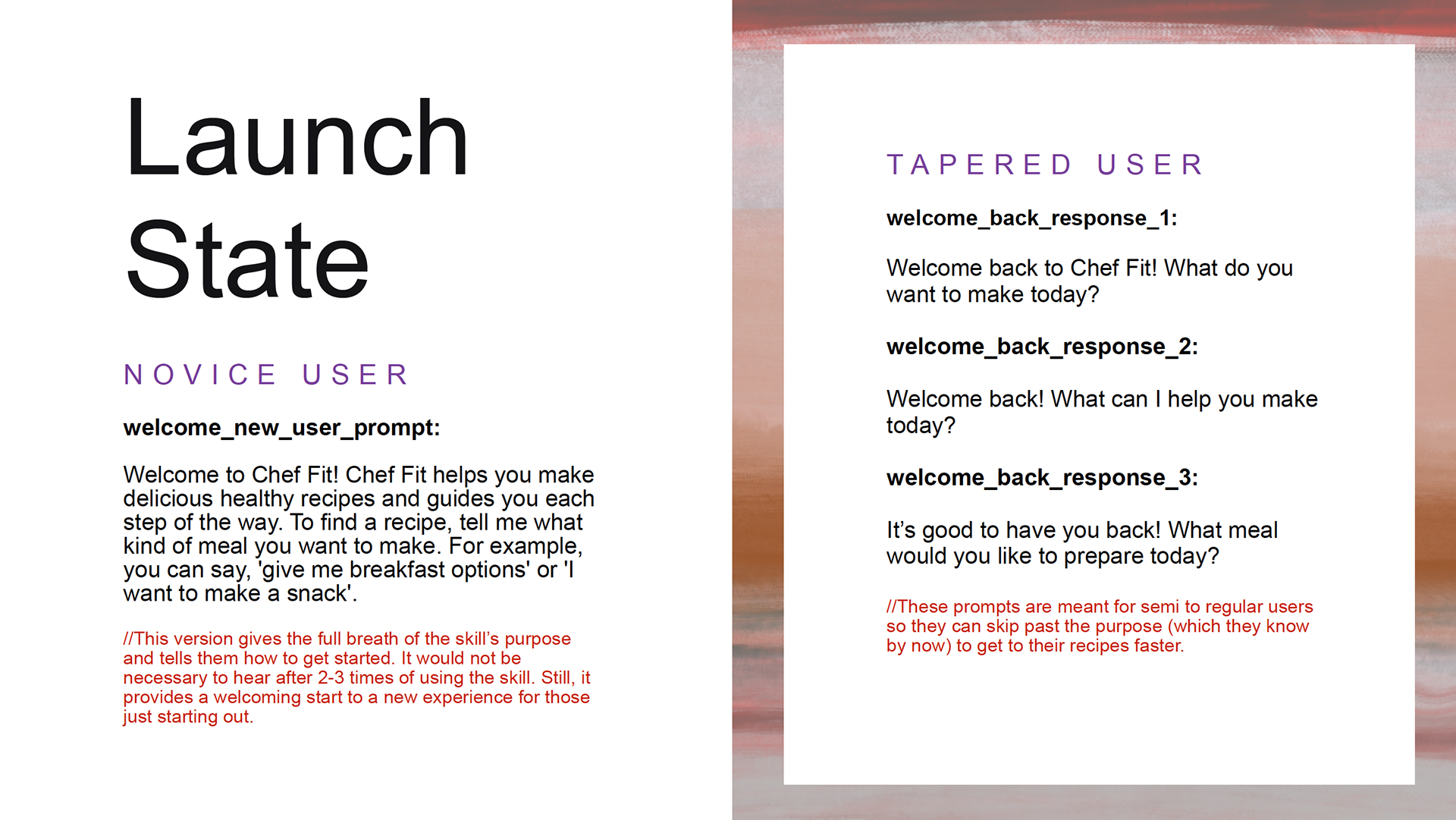
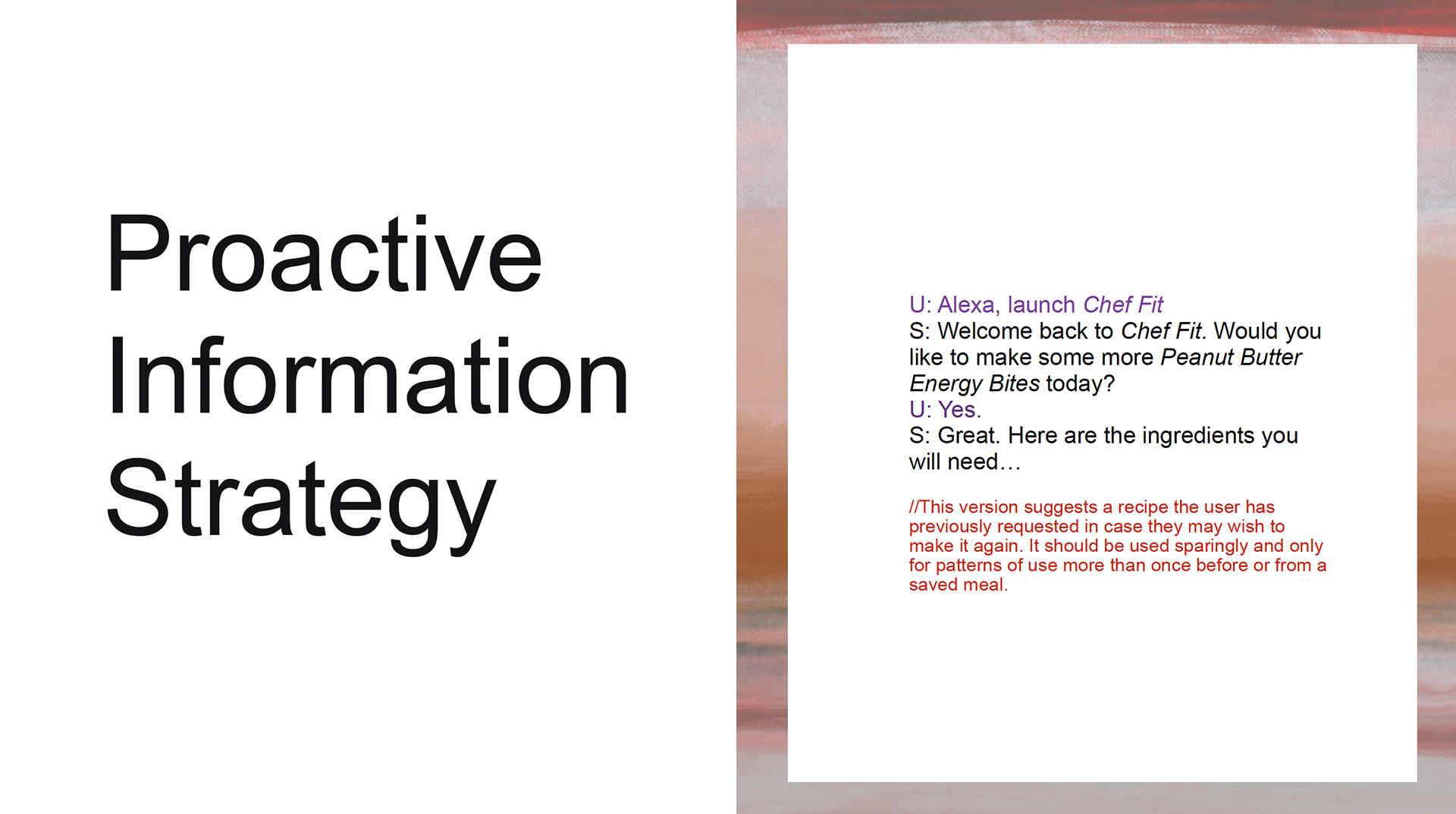
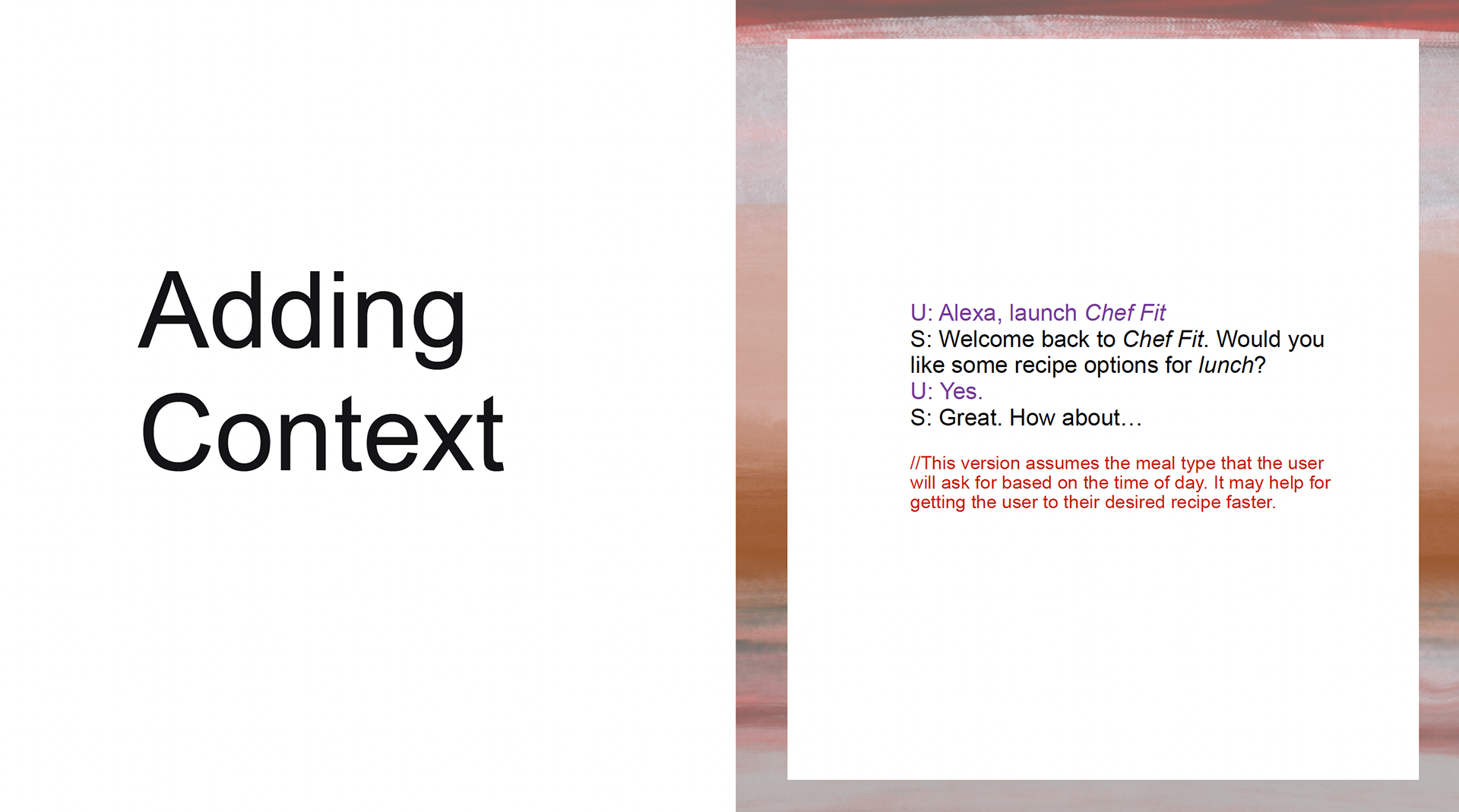
Usability Testing for Voice Interactions
The goal of this test was to evaluate the learnability for new users interacting with Chef Fit and receive feedback about their experience and satisfaction with using the skill. I observed how easily participants could complete scenario tasks and activities such as launching the skill, finding a recipe, following a recipe and repeating a step.
Test Objectives:
• Determine if the navigation is easy to use and understand.
• Identify any errors made when launching the skill.
• Identify any errors made when finding and selecting a recipe.
• Identify any errors made when following the recipe steps and asking to repeat a step.
• Identify any other issues that the participants may have encountered.
• Determine if the participants understand the purpose and value of the skill.
Methodology:
All tests were remote via Zoom and participants were asked to test from a quiet/non-distracting place (preferably their kitchen) in their home or location of choice. The test was conducted with the Wizard of Oz (WoZ) approach where I acted as Alexa and recorded the test to note my observations in more detail once complete. The test took 15 minutes.
Participants and Schedule:
I tested 5 participants recruited through personal networks (participant demographics and Q&A is included below).
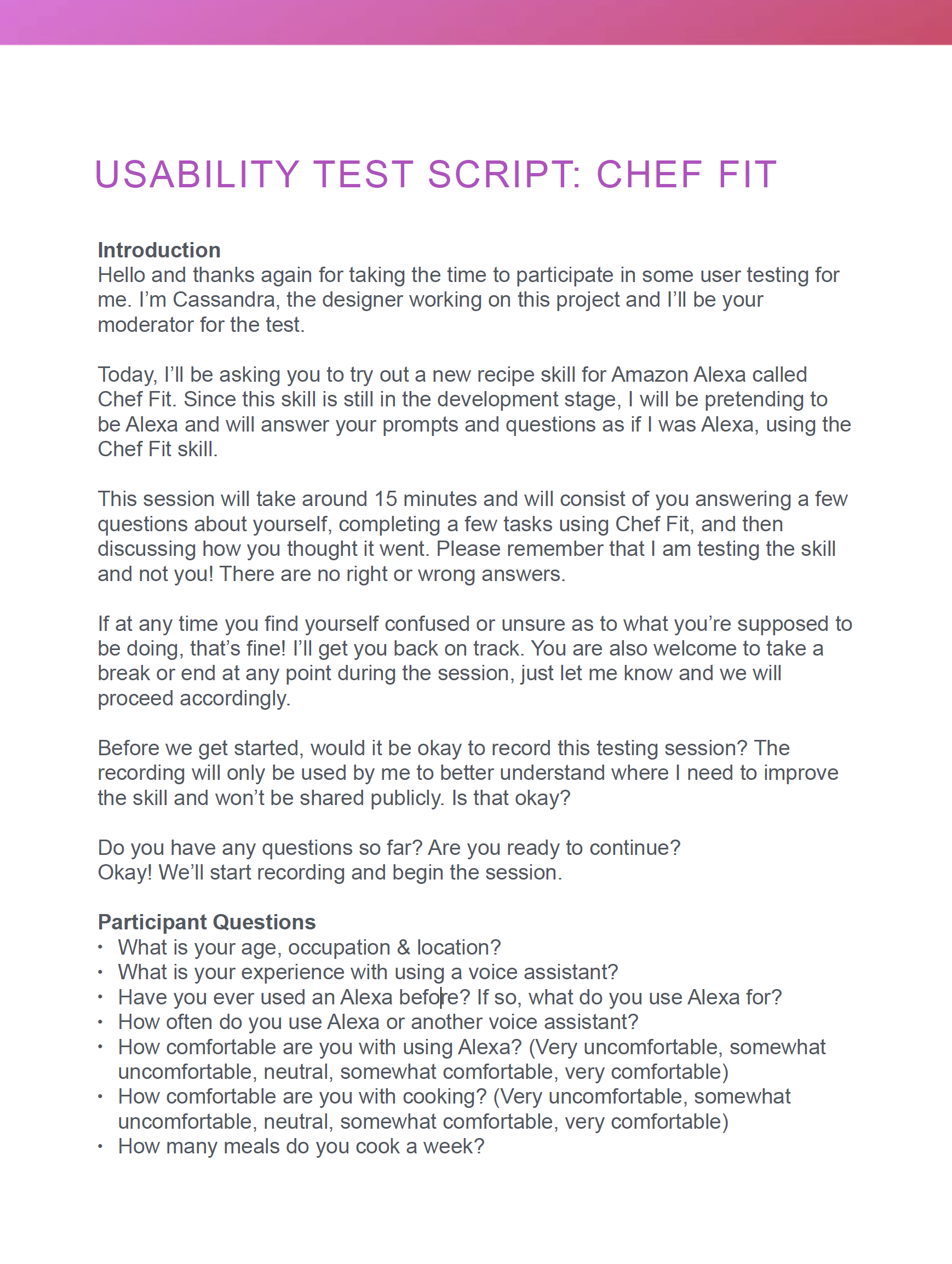


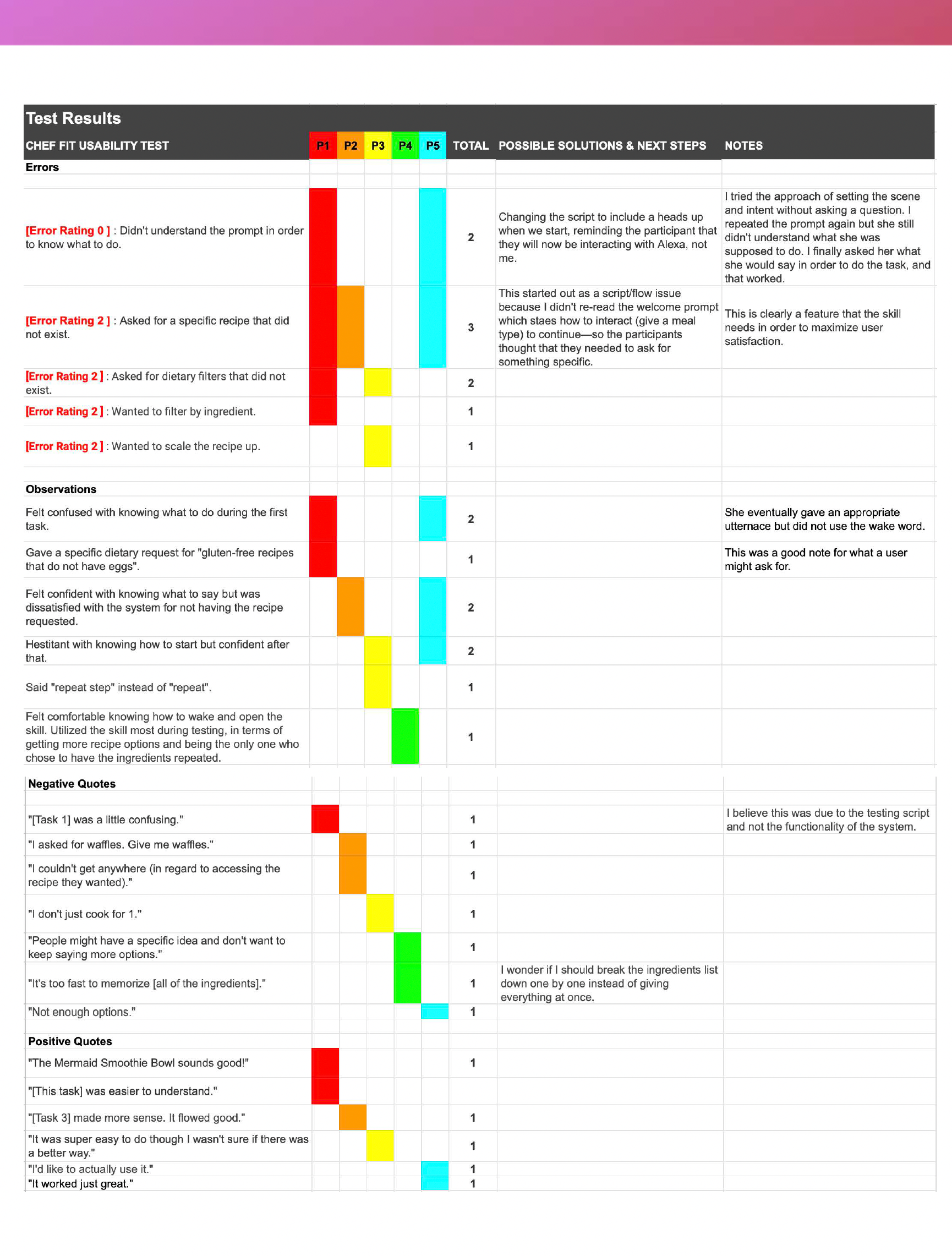
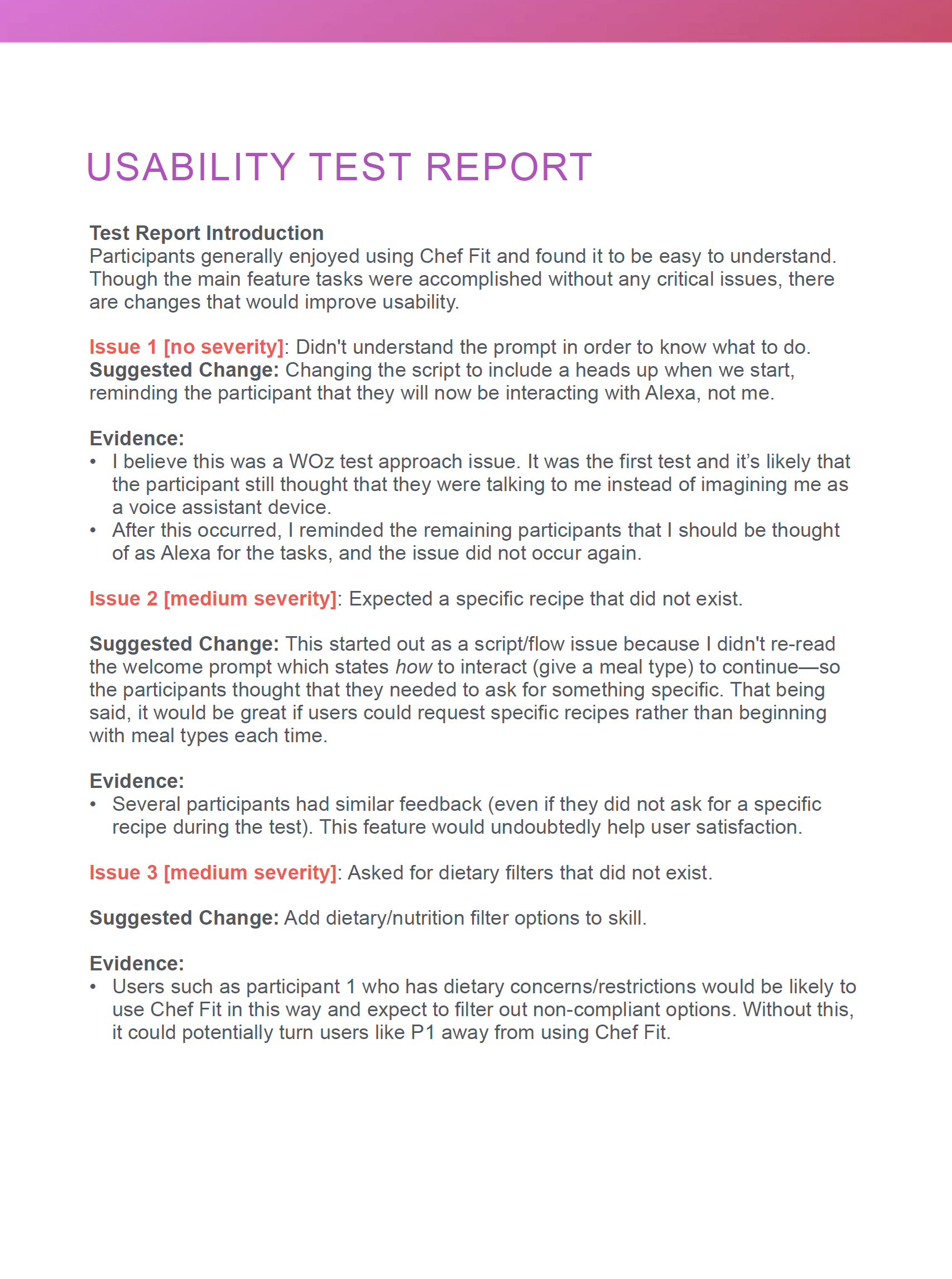
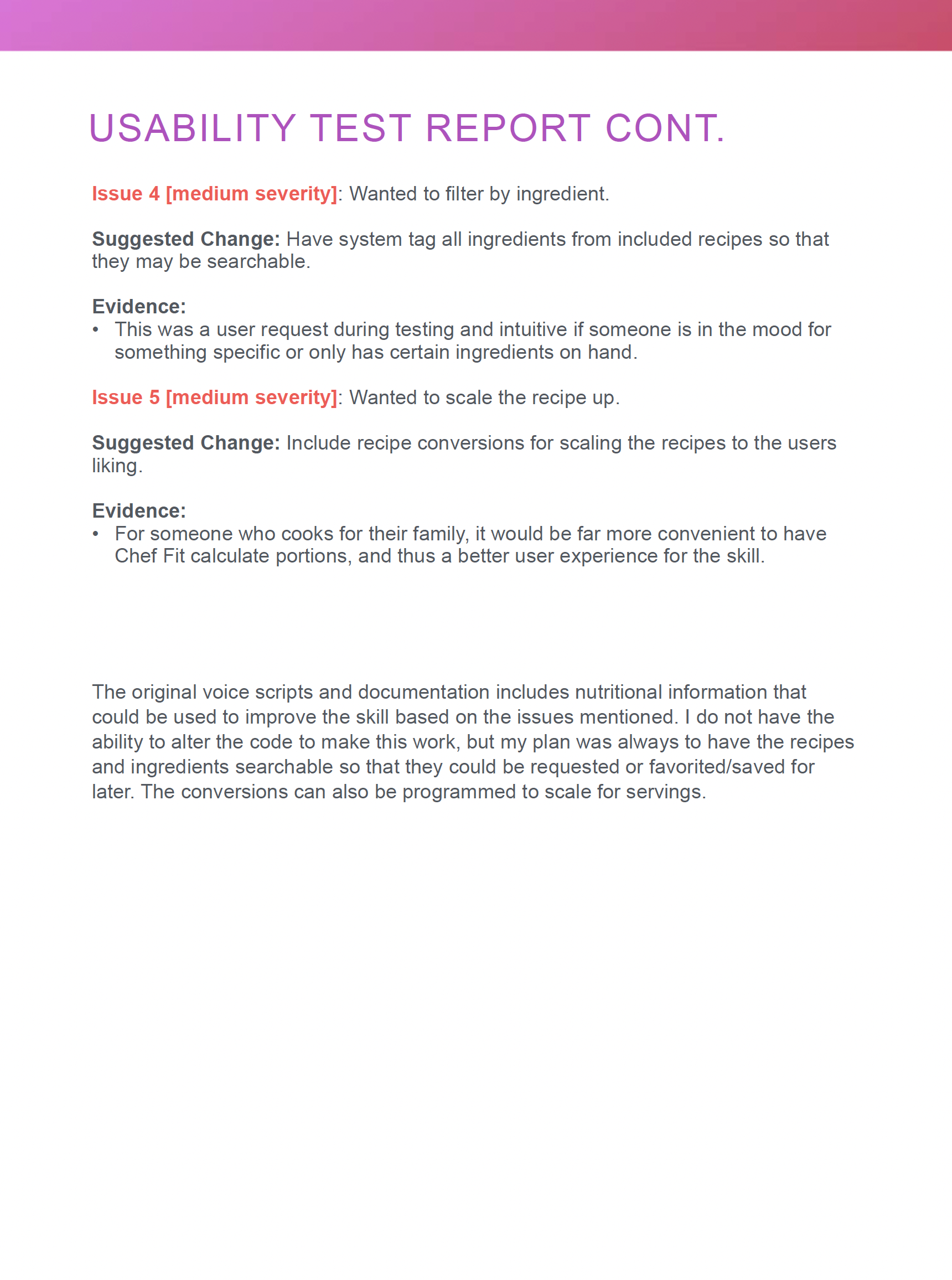
Conclusion
This project helped me gain insight into ways users interact with voice assistants. Being proactive, personal and conversational is something users will want and have come to expect. In business applications, there are so many ways to use voice to enhance the user experience, including order status and bills that are due. It's nice when you can anticipate why someone has opened an app (or in this case, skill) because it offers them a more personalized service, and users appreciate that.
My next steps for this project would be to update the design with more search and recipe adjustment options and to add more recipes to the database.
